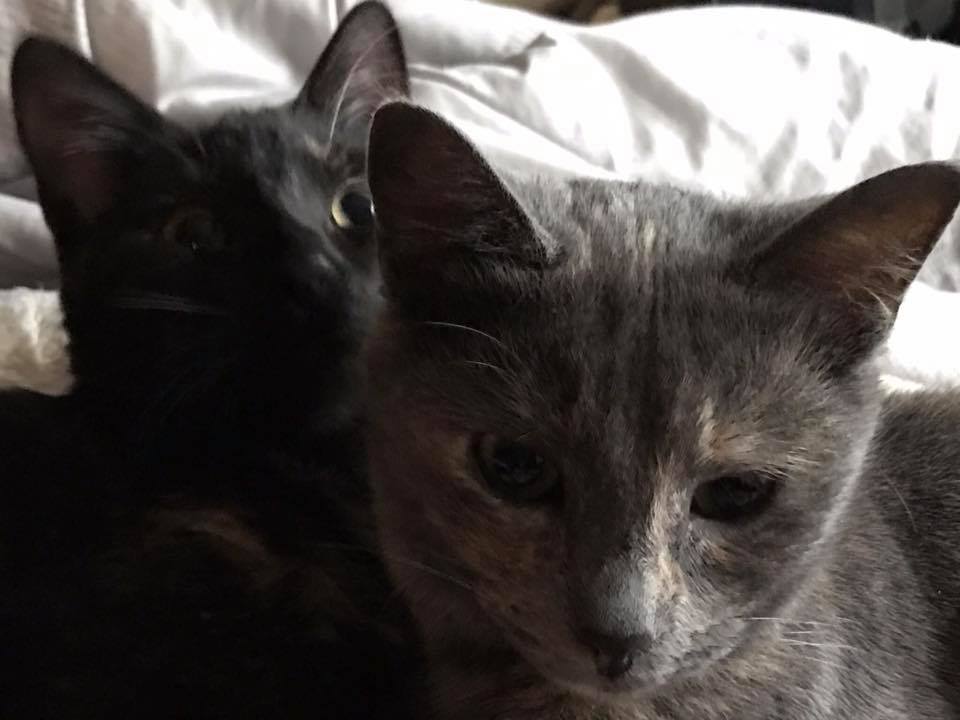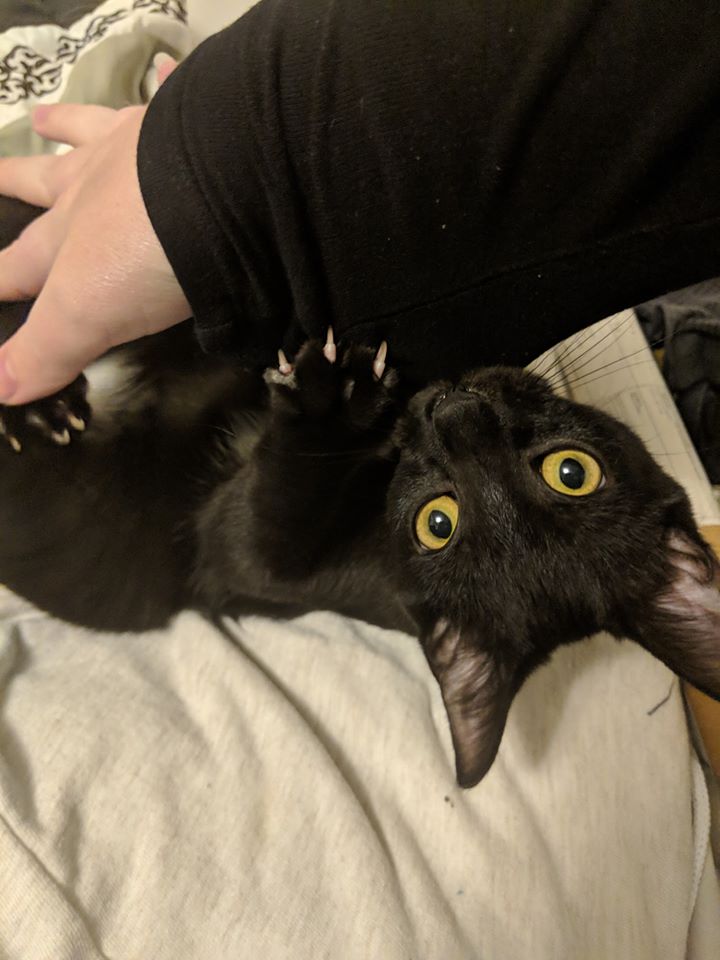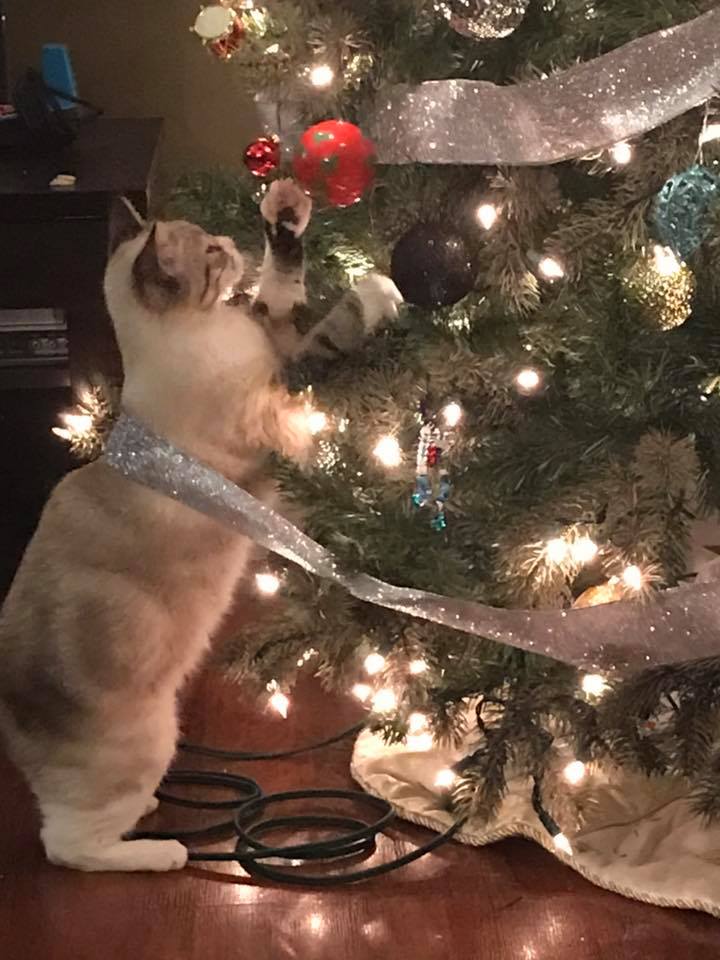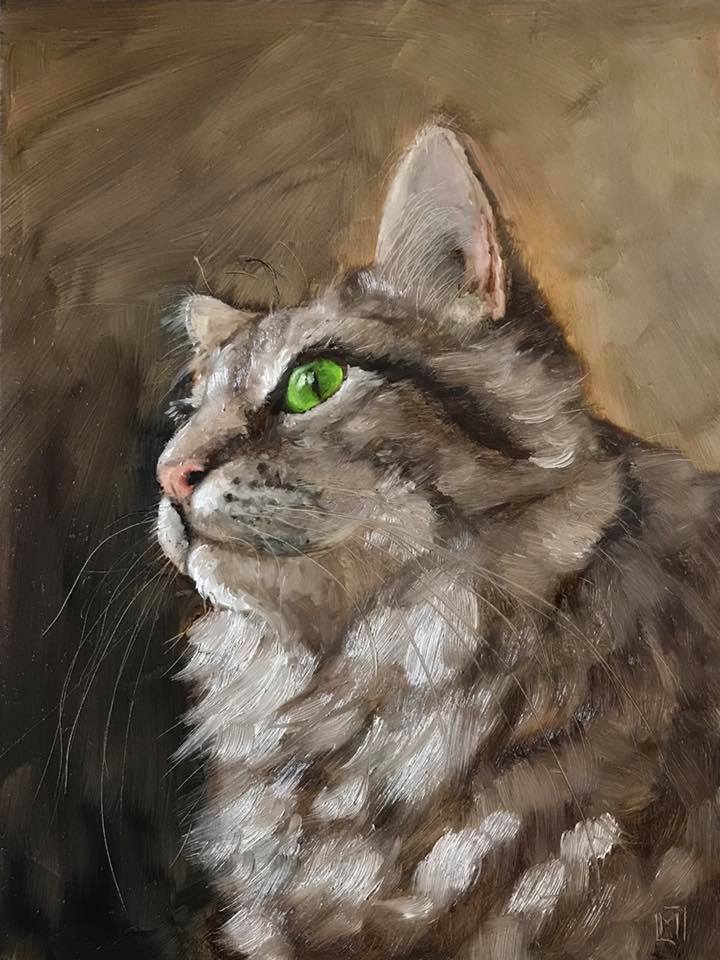Click here to view all of our currently available cats and kittens. We try to keep this updated as much as possible, but please be aware a cat may be adopted out before we get the chance to take their profile down.
Advertisement
Recent posts from our Facebook page
[custom-facebook-feed]
Success Story: Lucy
CTRS2018-12-27T19:37:00-08:00Success Stories|
Lucy, formerly Mercedes. Adopted in July. Sweetest kitten ever! And very talkative as you can see. She looooves playing with her dog sister and cat brother. Adoption process was so quick and easy; very happy
Success Story: Stella & Luna
CTRS2018-12-27T19:35:20-08:00Success Stories|
Stella, adopted from the Surrey Petland, and Luna adopted from Bosley’s in Langley. We adopted both of them about 3 weeks ago. Stella is a playful, active little girl who likes to be boss. She
Success Story: Sabrina
CTRS2018-12-27T19:33:28-08:00Success Stories|
Sabrina adopted from Langley Tisol just 10 days ago. She's adjusting well and loves to play. The process to get her was not too difficult and the people we worked with were great! -Tara
Success Story: Coal
CTRS2018-12-27T19:31:44-08:00Success Stories|
Our baby Coal a fire rescue kitty from 2017. I didn’t know I could love a cat so much. His adoption process was fast and easy. Thank you! ❤️?❤️ -Holly
Success Story: Shea
CTRS2018-12-27T19:28:41-08:00Success Stories|
This is Shea (formerly Rachel, 1st Cat Therapy kitty from the Maple Ridge PetSmart). We adopted her back in February and she has been such a pleasure. I was so happy with Cat Therapy that
Sucess Story: Bofur
CTRS2018-12-27T19:26:16-08:00Success Stories|
Formerly Tiger, Bofur has really grown from a 4month old DSH to a fluffy big boy. Here’s a painted portrait of him, painted by me. The adoption process was straightforward and I love how CTRS
Advertisement
Cat Care Advice
With the huge variety of pet food available in today’s marketplace, it can be hard to make an informed decision about which one is best for your kitty.
When shopping for a high-quality cat food, it’s critical to look at the label and understand exactly what ingredients you’re feeding your cat.
Avoid any foods that list corn, grains (i.e. rice), potatoes or yams as one of the first few ingredients. These are simply fillers and if these foods are fed to cats on a long-term basis, they can cause a variety of health issues such as kidney failure, cancer, diabetes, urinary crystals or blockages, obesity and digestive stress – just to name a few! Plus, your kitty will need to eat more of this food to feel full, which will ultimately cost you more in the long run.
Remember, cats are natural carnivores, meaning they are bred to eat meat. Therefore, it makes sense that a carnivore shouldn’t eat a food full of fillers since their body simply can’t process it properly. The only time a food with fillers is recommended is if your cat has a specific health issue – but, in this case, you should be consulting with your veterinarian to ensure you’re choosing just the right food for your feline.
So what foods are great for pets? Raw food is certainly high on the list and will prevent most health issues. While many people choose not to feed their cat a raw food diet because of the cost and perceived inconvenience, you can buy pre-made raw diets from speciality pet stores to make things easier. Even if you can’t feed your cat a strict raw diet, even once a week will be beneficial. Just remember, when we say raw we don’t mean a raw chicken breast! This will not be nutritionally complete and you can actually harm your cat.
If you decide raw isn’t for you, the following major pet food brands are all high-quality. This list isn’t exhaustive, so if you see something different at your local pet store, remember to read the labels.
-
Orejen
-
Nutrience Sub Zero
-
Acana
-
Go!
-
Now
-
Instinct
-
Wellness Core
Now there is one more thing to consider regarding your cat’s nutrition. Cats need proper moisture intake to keep them healthy and to also prevent issues, so providing dry food and water is not enough. You must incorporate a food with high moisture, such as canned food or raw. It is recommended to offer these at least twice a day to your cat.
For food and water only, use stainless steel or ceramic. Plastic harbours bacteria and can cause issues such as cat acne.
You can improve your cat’s water intake by using only stainless steel or ceramic dishes.
Water fountains are also great because cats love to drink from moving water. Another tip that can help your cat drink more is to move the water dish away from their food and litter box – this is because cats instinctively think that water close to their food is contaminated.
Although clay litter has been around for ages, we urge caution when using this for your kitty.
That’s because clay is full of silica dust, which has been proven to be harmful to both people and pets, and also includes many chemicals! Cats always lick their feet, so they will very likely ingest some of the litter; as for kittens, they are notoriously curious and sometimes eat their litter. When a cat ingests clay litter, it can form a hard concrete lump in their stomach, causing vomiting and sometimes death.
Many people are afraid of switching their long-term clay litter to another type because they worry that their cat won’t like the change. A cat who has used clay litter is most likely used to the texture of the litter, so switching to a litter with a similar texture is recommended-such as wheat-based litters or walnut shell-based ones.
At the shelter we use two types of litter because they are very cost effective-the first is newspaper pellets and the other is wood pellet litter. These two pellet litters do not clump so the tray needs to be completely dumped when soiled; however, wheat and walnut-based litters can be scooped!
Cats are territorial and quickly notice changes to their environments that include a new feline member.
Introducing a new cat into a single or multi-cat household is a gradual process. Try not to upset your resident cat(s) normal routine. Below are some systematic steps to take.
- Swapping Scents – Given that scent is a feline communicative pheromone, both the resident cat(s) and new cat must feel at ease with each other’s scents. As such, rub a towel/cloth against the fur near the cheeks of all the cats in the household – both resident and newcomer. (Use a separate cloth for each resident cat). Then swap the cloths, putting the new cat’s cloth in the resident cat(s) favourite areas and placing the resident cat(s) cloths in the new cat’s safe room. Do this for several days. Also, in time let your new cat out into your home while the resident cat(s) spend some time in the safe room. This temporary environmental switch will further the scent swapping process between the cats.
- Mealtime Locations – A few days after your feline newcomer has arrived place your other cat’s food dishes in close proximity to the safe room. If you have multiple cats, then rotate different cats and their food dish outside the room during the feeding schedule (breakfast, dinner, late night snack).
- Initial Visual Contact – Once the cat(s) (resident/new) are comfortable with each other’s scent then a face-to-face meeting can proceed.
- Allow the door of the safe room to open enough for the cats to see and sniff each other. During this time monitor the cats for any sign of aggressive behaviour. Unless there is a physical confrontation just continue this process. Cats have unique personalities and some felines find it easier than others to accept someone new more quickly than others. So be patient.
- Once all the cats are free of any problematic behaviours (hissing, growling, and posturing) the door can be opened allowing them to interact freely and safely.
- Help your existing cats feel secure by spending time with them throughout this whole introduction process. Do not favour the new cat over the others.
Cats should have their nails trimmed every 2-3 weeks because some cats do not properly shed their claw sheaths.
At the rescue, we have seen some cats with their nails overgrown into their feet. This is obviously very painful for your kitty and can be easily avoided. If you need a lesson on how to trim nails properly, we are happy to show you or you can ask your local vet.
Cats should be given oat grass (aka cat grass) every so often as it helps improve digestion and overall health.
You NEVER should buy flea products from anywhere other than a vet! A Lot of pet stores carry flea treatment products however many pets have died from them and they are very dangerous to use, it is currently an ongoing battle with the large companies to get them off the shelves.
You need to be aware that most houseplants are toxic to cats so it is very important to make sure you find out if your plants are safe!
- Create a secure, cat proofed environment (safe room), preferably in a space (e.g., bathroom) separated from your other pets. Make sure to close the toilet lid. Put your kitty in here for the first three or four days or longer (if needed).
- Provide some places to hide (pet carrier) and pet furniture (fluffy cat bed, small scratching post with a single perch). In the cat bed place an unwashed blanket, towel, or t-shirt with your scent on it. Helping your cat get used to your scent will make them feel more comfortable and help reduce any initial stress. Place an uncovered litter box in one corner of the room and food/water (stainless steel/ceramic) dishes in the other corner.
- Regular check-ins with your pet will monitor their progress and comfortableness. Spend supervised time with them. Let your feline set the pace for your emerging interactions and as time passes you will both bond with each other.
- Once your cat has access to other spaces in your home always let them retreat to their safe room if needs be. Please make this access gradual (1 or 2 rooms at a time) so your kitty does not become overwhelmed.
A cat should visit the vet at least once a year.
One human year to a cat is almost like five years to your kitty, so don’t put off these important visits for more than a year.
When taking your cat to the vet, there are some basic things we recommend:
- A FVRCP vaccine,
- Deworming (2 treatments),
- A thorough vet check.
Cats should be dewormed annually even if they are strictly indoor cats since they can still get worms from eating flies or from eating whatever you bring in on your shoes! If you only do the first dose your cat will not be fully rid of worms; you need the second dose 14 days later to ensure all the parasites are killed.
Your veterinarian will also let you know if there are other concerns for your cat that need to be addressed.
Indoor cats require ongoing stimulation that they otherwise would experience in outside environments.
Scratching post “cat tree” with perches – scratching is an expressive cat behaviour that enables felines to stretch, exercise muscles and leave key scent and visual markers. Given that cats like to climb up high taller posts are ideal and become a great lounging spot. Cat trees situated beside windows are a perfect location for bird watching. Some cats prefer flatterer scratching surfaces like the one in the turbo cat scratcher (see below). Cat scratchers (posts or other types) prevent your cat from inappropriately scratching and damaging furniture.
Cat feather teaser wand – provides endless fun and vigorous exercise. This interactive toy engages you with your pet in ways that build upon trust and a deeper connection.
Cat play tunnel – a great place to play, hide, and take a nap in.
Turbo cat scratcher – this toy allows cats to push a ball around a circular track and also scratch a corrugated cardboard pad in the centre of the scratcher.
Stuffed, soft catnip toys, ping-pong balls are some additional playthings.
Cat television entertainment – cats love wildlife imagery and sounds. Some DVD titles include Video Catnip, Movies for Cats, and The Cat Sitterseries found online (Amazon retailers & eBay).
Please stay clear of dangerous toys that include: small balls, string, bells (either alone or inside a ball), and toys with potentially removable parts that can be swallowed or dislodged during play (such as plastic eyes or noses found on mouse toys).
Beware of dangers around your home that can harm your beloved feline if purposely or accidentally ingested.
Most plants and flowers that are poisonous to cats! The most toxic are:
Lilies in all forms (Easter, Tiger, Day, Asiatic, Japanese, and Calla). These popular plants are typically found in floral arrangements. Cat ingestion of lily stems, leaves, flowers, pollen or even lily water, is extremely toxic and will result in death in many cases! Please do not have lilies in your home.
Other common toxic houseplants include: Aloe, Azalea, Chrysanthemum, Daffodils, Mistletoe, Poinsettia, Rhododendron, and Tulips.
Toxic human foods include: alcohol, avocado, bones & fat drippings, broccoli, caffeine, chocolate, coffee, grapes/raisins, hops, macadamia nuts (and others), milk/diary, moldy foods, mushrooms, root vegetables (chives, garlic, onions, leeks, & shallots), rhubarb, salty foods, seeds or pits in fruit (apple, apricot, cherry, peach, pear, plum, nectarine), mustard seed, tuna (for humans), xylitol (in candy, baked foods, sugarless gum, & toothpaste), and yeast dough. The potato family of plants (tomatoes, potatoes, paprika, chilli peppers, & eggplant) are extremely toxic in RAW form. Their foliage and vines included.
Lethal “over the counter” pet medications include: topical flea and tick medications for dogs and cats. Some toxic name brands are – Hartz Flea and Tick Control or Home Spray, Sergeants Flea Drops, and Big Spot Flea Shampoo. Purchase flea medications and other products from a vet.
Other toxic sources include: human medications, cosmetics, household products, many essential oils (diffused or topically applied), insecticides, and antifreeze etc.
Other items include: dental floss, rubber bands, ribbon, string, twine, small objects (buttons), balls of wool/yarn, Christmas tinsel, dangling cords, paper clips, magnets, and batteries etc.
Four very helpful websites are: The Cat Community (catfriendly.com), The Humane Society of the US (humanesociety.org), the BCSPCA (spca.bc.ca) and the (US) ASPCA (aspca.org) The latter site has a complete list and description of the effects of all poisonous plants, foods, household products, human medications and cosmetics on pets. The information contained on this page was largely drawn from these aforementioned websites.
The ASPCA Poison Control Center is a vital information source to call if you suspect that your cat has ingested or had any dangerous exposure to any of toxic sources above. The 24-hr number is 1-888-426-4435. An attending veterinarian can provide specific medical information (diagnosis, treatments) as it pertains to your individual case. Otherwise, take your pet to an Animal ER in the Lower Mainland – Canada West Veterinary Specialists (604-473-4882), Vancouver Animal Emergency (604-879-3737), or Burrard Animal ER (604-738-5683).










